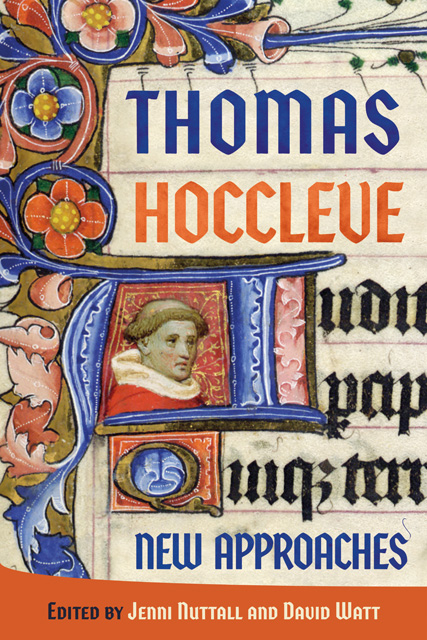9 - Hoccleve’s Feet: The Kinaesthetic Imaginary in Hoccleve’s Writing
Published online by Cambridge University Press: 11 January 2023
Summary
Hoccleve’s distinctive literary persona is vivified to a remarkable extent by the images of his body that appear throughout his writing. Whereas other poets mention their physical characteristics in passing – Will refers to his length in Piers Plowman and Chaucer jokes about his weight in the House of Fame – Hoccleve writes a great deal about his body’s shape and its constituent parts: head, brain, eyes, mouth, veins, heart, back, stomach, hands, legs, and feet. The motility of Hoccleve’s body features throughout his writing, yet most critics have either ignored it or subordinated it to the self-referential persona he so frequently describes. When Hoccleve’s body does receive attention, it is often read as a droll illustration of his self-con-scious state. Thus Hoccleve criticism reflects a broader practice in literary analysis which typically reads the body as a prop or a signifier for some other concept. This chapter takes a different approach. Following Guillemette Bolens, it aims ‘to explore the interpretive value of kinesic intelligence in reading gesture in literary narrative’. Readers’ perceptions, according to Bolens, are based on their embodied knowledge and on their kinaesthetic memory of the motor sensation of kinesis, of what a body in action feels like and how it behaves. Rather than tackling Hoccleve’s entire body from a kinesic perspective, this chapter focuses on feet. Feet perform steps or pas; they dance, jump, run, walk, shuffle, stroll, kick, hop, stomp. These various movements make different demands on the body and convey different meanings. This chapter concentrates on the way that feet walk, trot, and ‘pricke or prance’ in four of Hoccleve’s poems: the Series, the Prologue to the Regiment of Princes, the Male Regle, and the ballade addressed to Henry V which begins ‘Victorious Kyng’. The pedestrian movements in these poems vary in pace and character, but they all invite readers to assess and recognise various spiritual, physical, emotional, and cognitive states. Reading Hoccleve’s pedestrian imagery according to the principles of kinesic intelligence set forth by Bolens, I hope to track these various states and extend our appreciation of Hoccleve’s poetic technique, which is less pedestrian than these images might suggest.
- Type
- Chapter
- Information
- Thomas Hoccleve New Approaches , pp. 197 - 214Publisher: Boydell & BrewerPrint publication year: 2022



